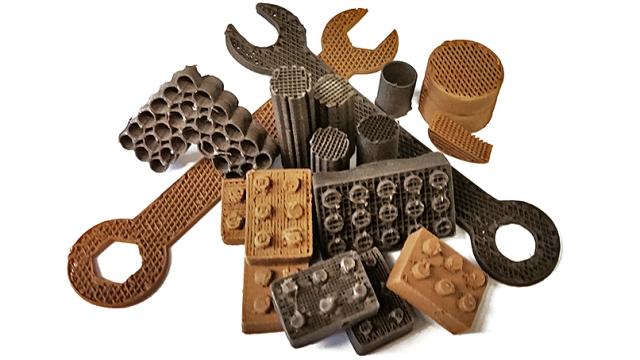One of the many challenges of colonising Mars is that the planet is lacking many of the natural resources we rely on here on Earth. We’ll need to bring as much of what we need to survive as possible, but you can only pack so much into a spaceship. So scientists are developing ways to utilise at least one of the red planet’s most abundant resources: Dust.
We’ve had a hard time coming up with reasons as to why everyone needs a 3D printer here on Earth, but on Mars the machines could be used to manufacture tools, spare parts, even entire structures, habitats and vehicles, given there’s no hardware stores for astronauts to visit if we eventually send humans on the 54.6 million km journey. But 3D printers don’t make things out of thin air.
[referenced url=”https://gizmodo.com.au/2015/05/nasa-wants-your-help-figuring-out-how-to-build-space-habitats/” thumb=”https://i.kinja-img.com/gawker-media/image/upload/t_ku-large/1256577392336998433.jpg” title=”NASA Wants Your Help Figuring Out How To Build Space Habitats” excerpt=”If and when we send colonists to Mars and beyond, we’re going to need habitats unlike any we’ve built before. To encourage out-of-the box thinking, NASA and America Makes are kicking off a $US2.25 million dollar competition to design and build 3D printed space habitats.”]
You’ve probably seen an affordable consumer-friendly 3D printer at work, melting and extruding thin lengths of plastic to build up a model. There isn’t any plastic on Mars, however, and packing kilometres of filament on a ship takes up valuable space that could be better used for transporting oxygen, water and other essentials. So scientists at Northwestern University’s McCormick School of Engineering have developed a way to turn extraterrestrial materials, like Lunar and Martian dust, into a 3D printing material.
While Martian meteorites kicked up from cosmic collisions have made their way to earth, giving us some idea of what the red planet is made of, we don’t have physical samples of the dirt and dust covering its surface. Instead, the Northwestern scientists have relied on NASA-approved simulants — AKA fake dust — that the space agency uses for its own testing purposes that match the shape and size of the tiny particles that make up Martian dust.
When mixed with a series of simple solvents and a biopolymer developed by the researchers that binds the dust together when dried, the material can be extruded with a 3D printer to create whatever Martian colonists happen to need. The printing process isn’t entirely dependent on materials found on Mars, but objects can be produced that are made of over 90 per cent dust, reducing the amount of raw material a spaceship needs to haul.
3D printing still has a long way to go before astronauts impossibly far from home can rely on it for survival. A machine screwing up after 20 hours of printing is annoying here, but could mean life or death for off-world colonists. However, it might eventually be one of the best tools for quickly setting up a viable establishment, without requiring astronauts to plan and pack for every possible scenario once they land.
